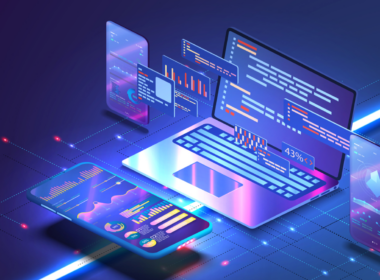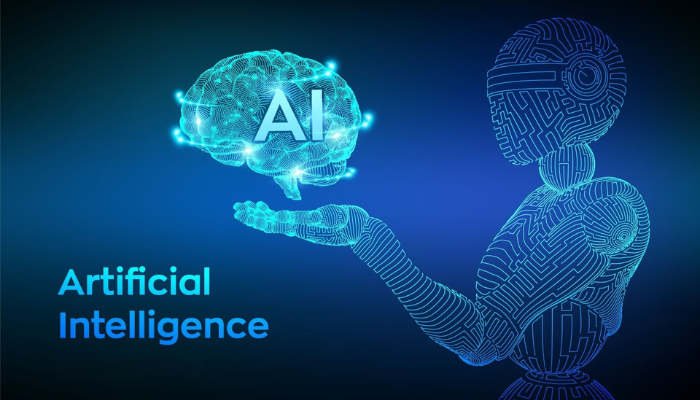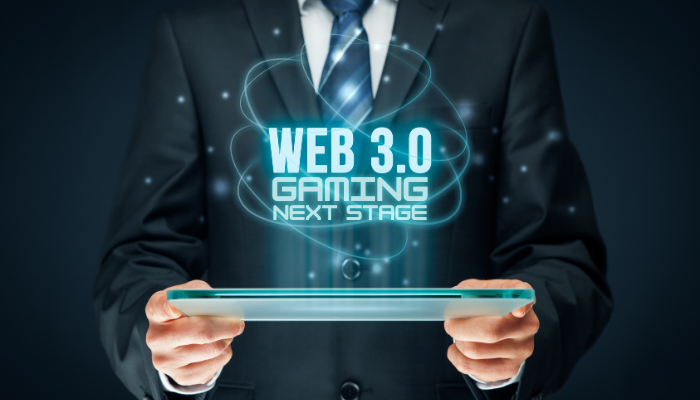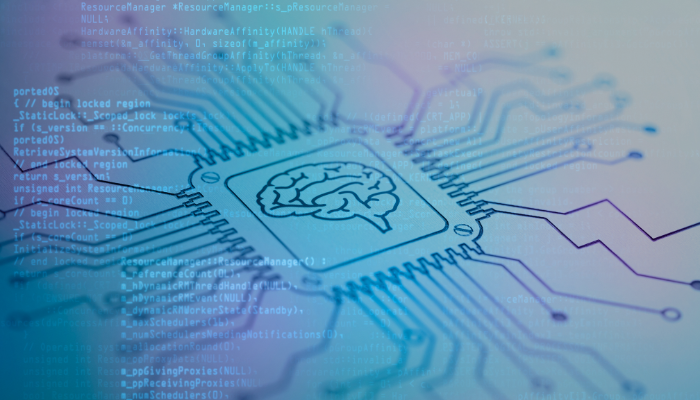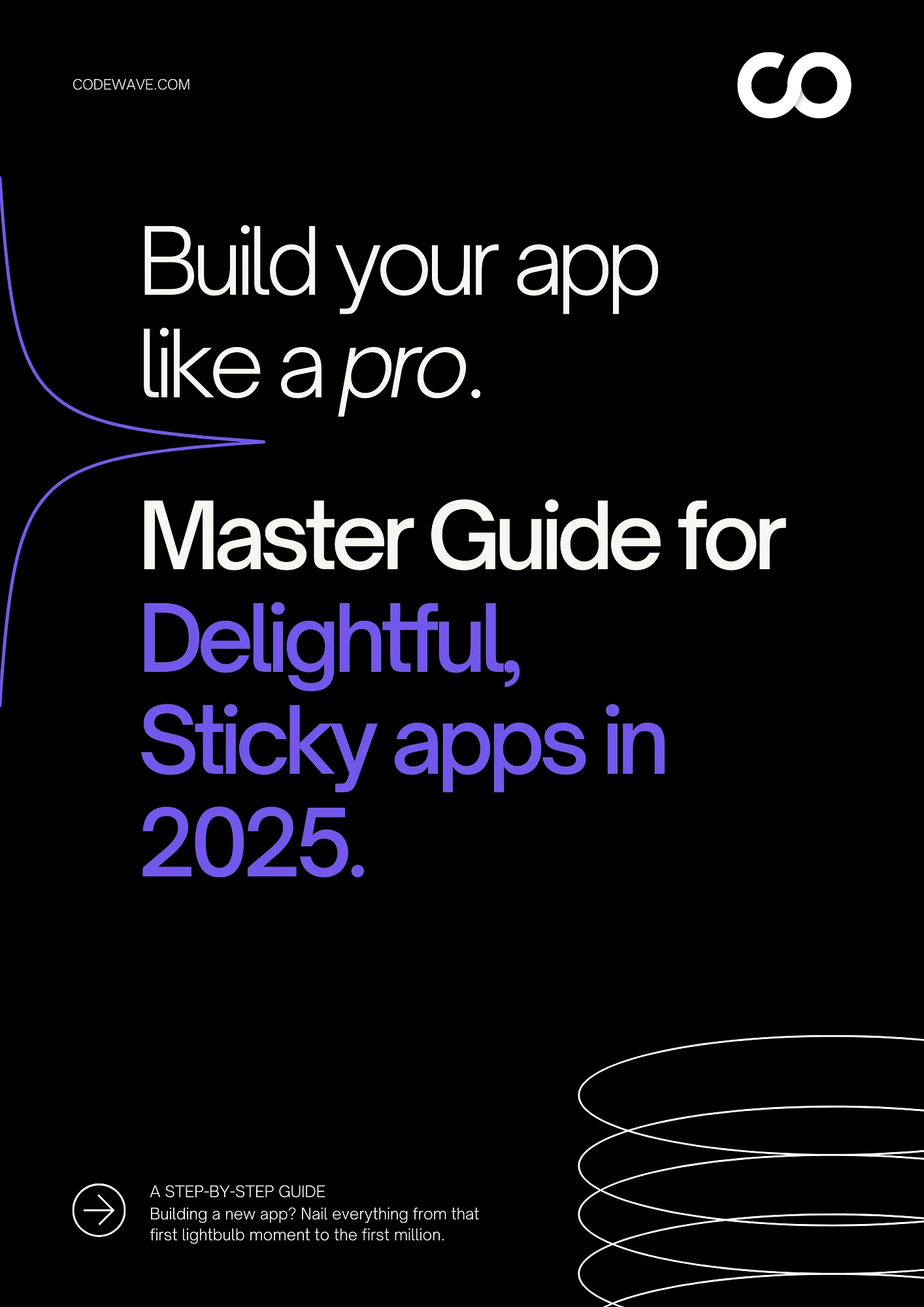“I just need something that works, fast!”
“Why can’t this model train faster?”
“Isn’t there an easier way to get this done?”
These are the thoughts that cross the minds of anyone working with AI, whether you’re just starting out or you’re deep into your project. The struggle is real—getting the right AI tools that fit your needs and speed up your development.
If you’ve been diving into AI, you know that frameworks and libraries are like the building blocks of a solid AI project. But, with so many options out there, how do you choose? From TensorFlow to PyTorch, and everything in between, these frameworks not only accelerate development but also enhance the efficiency of your models.
So, if you’re ready to stop struggling with inefficiencies and dive straight into making AI work for you, let’s explore the top AI frameworks and libraries you need to learn to elevate your AI game.
But first, let’s talk about why AI frameworks are so crucial to your development process and how they can make your work smoother and more efficient.
Why AI Frameworks & Libraries Matter in Development
When it comes to building AI, speed and efficiency are the name of the game. Without the right framework, you’re basically starting from scratch—and who has time for that? Here’s why AI frameworks are game-changers:
- Save Time, Get Results Faster: Frameworks come with pre-built functions and optimized algorithms that do the heavy lifting for you. Instead of coding everything from scratch, you can hit the ground running and focus on solving real problems.
- Scalability for the Win: Whether you’re working on a small project or something massive, frameworks like TensorFlow and PyTorch are designed to scale as you grow. They’ll keep up with your data, no matter how big it gets.
- Battle-Tested Reliability: These frameworks aren’t just popular—they’ve been tested by thousands of developers and real-world applications. You don’t have to worry about bugs or inefficiencies because they’ve been proven to deliver.
- More Room for Innovation: By cutting down the time spent on the basics, frameworks let you focus on what really matters: creating something new. Whether it’s a groundbreaking NLP model or a custom neural network, frameworks give you the flexibility to innovate.
Now that we understand why AI frameworks are essential for development, let’s take a closer look at the top frameworks you should be learning. We’ll explore their features, pros and cons, and real-world use cases, so you can decide which one fits best for your next AI project.
Top AI Frameworks and Libraries to Learn
1. TensorFlow
TensorFlow is one of the most popular deep learning frameworks in the AI space, developed by Google Brain. It’s known for its scalability and flexibility, making it suitable for everything from small research projects to large-scale, production-level AI systems. TensorFlow powers many real-world applications, from Google’s search algorithms to self-driving car technologies.
What makes TensorFlow a go-to framework is its ability to handle complex deep learning tasks efficiently, with the added benefit of being production-ready. Whether it’s image recognition, natural language processing (NLP), or even time series forecasting, TensorFlow provides a solid foundation to work with.
Key Features of TensorFlow
- Scalability: TensorFlow is built to scale. Whether you’re working on a small model or need to distribute training across multiple GPUs or TPUs, TensorFlow can handle it. This makes it a great option for both research and real-world applications.
- Flexibility: TensorFlow supports a low-level API for advanced users who need full control over their models, and a high-level API (like Keras) for quick prototyping, making it ideal for both beginners and experts.
- Deployment Options: TensorFlow provides a wide range of tools for deploying your models, including TensorFlow Lite for mobile devices, TensorFlow.js for browser-based applications, and TensorFlow Serving for real-time production environments.
- Comprehensive Ecosystem: TensorFlow isn’t just a deep learning framework; it’s an entire ecosystem. With tools like TensorFlow Hub for reusable models and TensorFlow Extended (TFX) for managing end-to-end ML pipelines, TensorFlow offers everything you need to develop and deploy AI solutions.
- Cross-Platform: TensorFlow works across multiple platforms, supporting Python, C++, JavaScript, and other languages. This flexibility makes it adaptable to different development environments.
Pros and Cons of TensorFlow
| Pros | Cons |
| Scalable: Easily handles small to large-scale models. | Steep learning curve: More complex than some frameworks, especially for beginners. |
| Deployment options: Includes TensorFlow Lite (mobile), TensorFlow.js (web), and TensorFlow Serving (production). | Verbose syntax: Requires more lines of code compared to other frameworks like PyTorch. |
| Multi-GPU & TPU support: Efficient for large datasets and distributed training. | Static graph structure: Makes it harder to experiment quickly compared to more flexible frameworks. |
Use Cases for TensorFlow
- Healthcare: TensorFlow is used in medical imaging, such as analyzing X-rays and MRIs for disease detection. Its image recognition capabilities make it ideal for building AI-powered diagnostic tools.
- Self-Driving Cars: TensorFlow is a key player in autonomous vehicle technology. It powers AI models that perform object detection and decision-making for self-driving systems.
- Financial Services: TensorFlow helps predict market trends and detect fraud in real-time. Its predictive analytics capabilities make it valuable in the financial sector, where accuracy and speed are critical.
2. PyTorch
Next up, let’s talk about PyTorch, a framework that’s been gaining massive popularity, especially among researchers and developers who want flexibility in their work. Unlike TensorFlow, which uses a static computation graph, PyTorch offers a more dynamic approach, making it perfect for those who want to experiment with their models and fine-tune them on the fly. It’s also the go-to choice for many when it comes to cutting-edge research.
What makes PyTorch stand out is how it gives developers full control while still being user-friendly enough for quick prototyping. This makes it ideal for projects that require a bit more freedom and a hands-on approach to the development process.
Key Features of PyTorch
- Dynamic Computation Graph: Unlike TensorFlow’s static graph, PyTorch’s dynamic computation graph allows for more flexibility during model development. This makes it much easier to experiment with different architectures and modify the model during runtime.
- Pythonic and Intuitive: PyTorch’s syntax is easy to understand and closely follows Python programming conventions, which makes it feel natural to work with. For anyone familiar with Python, jumping into PyTorch is seamless.
- Strong GPU Acceleration: PyTorch is designed to take full advantage of GPU acceleration, which speeds up model training and makes it more efficient for heavy deep learning tasks. It also supports multi-GPU training, making it a solid choice for scaling large models.
- Great for Research and Prototyping: Due to its dynamic nature, PyTorch is the preferred framework for AI researchers. It allows them to prototype quickly, iterate on models, and test new ideas without worrying about the constraints of a static graph.
Pros and Cons of PyTorch
| Pros | Cons |
| Dynamic graphs: Ideal for experimenting and tweaking models. | Lesser production-ready tools compared to TensorFlow for deployment. |
| Pythonic syntax: Easy to learn for Python developers. | Not as scalable for large production systems without additional tools. |
| Excellent GPU support: Efficient training on GPUs, even with large models. | Smaller ecosystem compared to TensorFlow, though this is growing rapidly. |
Use Cases for PyTorch
- Computer Vision: PyTorch’s flexibility and GPU acceleration make it the ideal choice for real-time image processing tasks, such as face recognition or object detection.
- Natural Language Processing (NLP): PyTorch is commonly used for NLP models, powering chatbots and language translation systems due to its easy-to-use API for handling sequences of text.
- Research & Prototyping: Whether it’s reinforcement learning or experimenting with novel neural architectures, PyTorch’s dynamic graph and flexibility make it a top choice in the research community.
3. Scikit-Learn
When you think of a versatile machine learning framework, Scikit-learn is the one that often comes to mind. It’s the go-to choice for anyone working with smaller datasets or building traditional machine learning models.
Unlike TensorFlow and PyTorch, which are heavyweights in the deep learning world, Scikit-learn is more focused on providing simple tools for tasks like classification, regression, clustering, and dimensionality reduction. It’s perfect for anyone who wants to get results fast without having to deal with the complexities of neural networks.
Key Features of Scikit-Learn
- Comprehensive Algorithm Library: Scikit-learn offers a huge range of machine learning algorithms, from classification and regression to clustering and dimensionality reduction. It covers almost everything you’d need for basic machine learning tasks.
- Preprocessing and Model Evaluation: Scikit-learn provides built-in tools for feature selection, hyperparameter tuning, and cross-validation to help you get the most out of your data and models.
- Easy to Use: One of Scikit-learn’s biggest strengths is how easy it is to learn. Its consistent API allows you to quickly train models and experiment without spending time learning complicated syntax.
- Integration with Other Libraries: Scikit-learn seamlessly integrates with other libraries like Pandas, NumPy, and Matplotlib, making it an essential tool for data preprocessing, visualization, and model building.
Pros and Cons of Scikit-Learn
| Pros | Cons |
| Simple and easy to use: Great for beginners and quick prototyping. | Limited deep learning support: It’s not designed for handling deep learning models. |
| Comprehensive algorithm library: Provides a wide range of machine learning models. | Less suitable for large datasets compared to deep learning frameworks. |
| Excellent preprocessing tools: Built-in feature selection and data scaling. | Not as flexible for complex, custom architectures compared to TensorFlow or PyTorch. |
Use Cases for Scikit-Learn
- Predictive Analytics: Scikit-learn is perfect for creating predictive models in fields like marketing, finance, and healthcare. For example, predicting customer churn or risk scoring in loan applications.
- Customer Segmentation: With its clustering algorithms, Scikit-learn is often used to perform customer segmentation based on behavior or purchasing patterns.
- Recommendation Systems: Scikit-learn’s tools can be used to build simple recommendation systems, like suggesting products based on past purchases or viewing history.
4. Keras
Keras is a high-level neural network API, built on top of other frameworks like TensorFlow and Theano. It’s loved for its simplicity and ease of use, especially when you’re getting started with deep learning.
Keras abstracts away much of the complexity, making it easier to build and experiment with deep learning models. If you’re looking for an intuitive way to get into deep learning, Keras is an excellent starting point.
Key Features of Keras
- User-Friendly & Modular: Keras makes it super easy to define models with its simple, Pythonic syntax. Whether you’re using the Sequential API for simple models or the Functional API for more complex architectures, Keras makes the whole process seamless.
- Supports Multiple Backends: Keras works on top of different backends like TensorFlow, Theano, and Microsoft Cognitive Toolkit (CNTK). This gives you flexibility, as you can switch between different frameworks based on your project’s needs.
- Pretrained Models: Keras offers a variety of pre-trained models, such as ResNet, MobileNet, and Inception, that you can fine-tune for your specific application.
- Automatic GPU & TPU Support: With Keras, you can run your models on GPU and TPU without needing to worry about managing hardware resources. It’s optimized for high-performance computing.
Pros and Cons of Keras
| Pros | Cons |
| User-friendly syntax, perfect for beginners. | Not as flexible for complex model architecture compared to pure TensorFlow or PyTorch. |
| Offers access to pretrained models, saving time on training. | Limited support for custom layers and advanced features. |
| Can run seamlessly on GPU and TPU. | Lacks the depth for research-oriented experimentation compared to other frameworks. |
Use Cases for Keras
- Image Recognition: Keras is often used for image classification and object detection with pre-trained models like VGG16 or ResNet.
- Text Classification: With Keras, you can easily build models for text classification tasks, including spam detection and sentiment analysis.
- Time Series Forecasting: Keras is frequently used for building models that handle time series data for applications like stock market predictions or weather forecasting.
5. PyTorch Lightning
PyTorch Lightning is an abstraction layer built on top of PyTorch designed to reduce boilerplate code. It gives you all the power and flexibility of PyTorch with a more structured workflow, making it easy to scale models from research to production.
If you’re already familiar with PyTorch but want to streamline your development process, PyTorch Lightning is a great option.
Key Features of PyTorch Lightning
- Less Boilerplate Code: PyTorch Lightning removes repetitive code, allowing you to focus more on the model design rather than managing the training loop or debugging.
- Seamless Multi-GPU & TPU Support: It offers easy support for multi-GPU and multi-TPU setups, so scaling models across multiple devices is a breeze.
- Built-in Logging: PyTorch Lightning integrates with logging tools like TensorBoard and Comet, so you can track your training progress and monitor experiments easily.
- Reproducibility: With PyTorch Lightning, you get reproducible results across experiments, which is key for research and collaborations.
Pros and Cons of PyTorch Lightning
| Pros | Cons |
| Reduces boilerplate code, making the development process cleaner. | May limit some customization compared to pure PyTorch. |
| Seamless scaling across multiple GPUs and TPUs. | Might be an overkill for small projects or beginners. |
| Built-in logging tools for easy experiment tracking. | Relies on PyTorch, which can still have a steeper learning curve. |
Use Cases for PyTorch Lightning
- Large-Scale Image Recognition: For deep learning researchers, PyTorch Lightning offers easy model scaling for tasks like image classification on large datasets.
- Natural Language Processing (NLP): PyTorch Lightning is used for research projects in NLP like transformers and BERT models, which require frequent experimentation.
- Reinforcement Learning: Researchers use PyTorch Lightning for reinforcement learning models, allowing them to manage experiments more effectively and scale with ease.
Picking the right framework can feel like choosing the perfect pair of shoes—it’s all about fit. If you’re still wondering which one might work best for your needs, read top deep learning frameworks for 2025 and make a more informed choice.
6. MXNet
MXNet is an open-source deep learning framework known for its high scalability and efficiency in training large models. It supports distributed training across multiple machines and is ideal for handling massive datasets.
Companies like Amazon use MXNet for their AI-powered services, and it’s highly optimized for both research and production use cases.
Key Features of MXNet
- Highly Scalable: MXNet can handle massive datasets, supporting multi-GPU and multi-node training, making it ideal for large-scale machine learning tasks.
- Flexible Programming: Supports both symbolic and imperative programming, giving developers the ability to choose how they want to define models and processes.
- Efficient Memory Use: MXNet is designed to be memory-efficient, enabling large models to be trained even with limited resources.
- Cloud-Friendly: MXNet is built to scale on cloud platforms, with native support for AWS, Microsoft Azure, and Google Cloud, making it perfect for cloud-based AI applications.
Pros and Cons of MXNet
| Pros | Cons |
| Highly scalable: Efficiently handles large datasets and multi-GPU training. | Steep learning curve compared to other frameworks like PyTorch. |
| Supports both symbolic and imperative programming. | Smaller community than TensorFlow or PyTorch, which can make troubleshooting more challenging. |
| Built to scale with cloud-native support. | Lacks some advanced functionalities found in other deep learning frameworks. |
Use Cases for MXNet
- Voice Recognition: MXNet is often used for speech-to-text models, thanks to its efficient handling of large-scale data.
- Image Recognition: Its scalable nature makes it great for training on massive image datasets for applications like object detection.
- Cloud-Based AI Services: With its strong cloud integration, MXNet is a solid choice for building cloud-native AI applications, particularly on AWS.
7. LightGBM
LightGBM (Light Gradient Boosting Machine) is a high-performance framework designed for large datasets and quick model training. Known for its speed and low memory usage, LightGBM is widely used in data science competitions (such as Kaggle) due to its ability to process large volumes of data in a short amount of time. It’s especially popular for tasks like classification, regression, and ranking.
Key Features of LightGBM
- Lightning-Fast Training: LightGBM is built to handle large datasets much faster than traditional gradient boosting algorithms. Its histogram-based learning method ensures that it uses fewer resources and runs faster.
- Low Memory Usage: Unlike other frameworks, LightGBM is designed to be memory-efficient, making it ideal for training on large datasets that would otherwise be too big for other models to handle.
- Parallel and GPU Support: It supports parallel and GPU-based training, enabling faster model training even with massive datasets.
- Great for High-Dimensional Data: LightGBM handles datasets with many features (high-dimensional data) very efficiently, which is essential for dealing with complex real-world data.
Pros and Cons of LightGBM
| Pros | Cons |
| Fast training: Can handle large datasets with ease and speed. | Sensitive to hyperparameters, requiring careful tuning for optimal performance. |
| Low memory usage: Efficiently uses memory during training. | Can be prone to overfitting on smaller datasets without proper regularization. |
| Scalable: Works well with both small and large datasets. | Not as flexible for certain advanced tasks compared to deep learning models. |
Use Cases for LightGBM
- Kaggle Competitions: LightGBM is widely used in data science competitions due to its efficiency in handling large datasets and fast training times.
- Predictive Analytics: It’s often used in finance and marketing to predict customer behavior, stock prices, or churn prediction.
- Ranking Systems: LightGBM is a great choice for ranking tasks, like recommendation engines or search ranking systems.
8. XGBoost
XGBoost (Extreme Gradient Boosting) is one of the most popular gradient boosting frameworks. Known for its accuracy, speed, and scalability, XGBoost is often the first choice for Kaggle competitions and other machine learning challenges. It’s a highly optimized algorithm that works well with structured/tabular data, making it ideal for a wide range of tasks.
Key Features of XGBoost
- High Prediction Accuracy: XGBoost uses regularization to reduce overfitting and improve model accuracy, making it an excellent choice for classification and regression tasks.
- Parallel & GPU Acceleration: It supports distributed computing, allowing for faster training on large datasets, and can use GPU acceleration for even quicker results.
- Handles Missing Values: XGBoost is robust to missing data and automatically handles missing values during the training process.
- Feature Engineering Support: It provides built-in support for feature selection and feature importance scoring, helping you identify the most impactful variables in your dataset.
Pros and Cons of XGBoost
| Pros | Cons |
| High accuracy: Regularized boosting improves prediction quality. | Requires careful tuning of hyperparameters for optimal performance. |
| GPU and parallel support: Fast training on large datasets. | Memory consumption can be high for very large datasets. |
| Handles missing data efficiently. | Not ideal for deep learning tasks or large unstructured datasets. |
Use Cases for XGBoost
- Customer Churn Prediction: XGBoost is widely used in customer retention models, such as predicting churn in subscription-based businesses.
- Financial Risk Assessment: It’s used in credit scoring and fraud detection due to its high accuracy and efficiency with structured financial data.
- Sales Forecasting: XGBoost is often applied to predict sales numbers in e-commerce or retail, providing accurate demand forecasts.
We all know no two apps are the same, and similarly, choosing the right AI framework is just as crucial. Need guidance on which AI framework can work best for your cross-platform mobile project? Read Here!
9. CatBoost
CatBoost is another gradient boosting framework that shines when it comes to handling categorical data. Developed by Yandex, it’s designed to handle categorical features without the need for explicit preprocessing like one-hot encoding. CatBoost provides high accuracy and is easy to use with minimal configuration.
Key Features of CatBoost
- Automatic Handling of Categorical Features: Unlike other frameworks, CatBoost automatically handles categorical variables, which means you don’t have to spend time encoding them into numerical values.
- Fast Training Speed: CatBoost is designed to be efficient and fast, offering quick model training even with large datasets and numerous categorical features.
- Great for Noisy Data: CatBoost is highly robust to noisy data, making it ideal for real-world applications where data might not always be clean.
- GPU Support: Like other top frameworks, CatBoost offers GPU acceleration to speed up model training.
Pros and Cons of CatBoost
| Pros | Cons |
| Handles categorical data automatically, without needing encoding. | Can be slower than other models when the dataset is small. |
| Fast and efficient training process. | Less flexible for advanced machine learning tasks compared to other frameworks. |
| Great for noisy data: Works well even when data is not clean. | Smaller community compared to frameworks like XGBoost or LightGBM. |
Use Cases for CatBoost
- Recommendation Systems: CatBoost is well-suited for building recommendation engines that work with large, noisy datasets.
- Search Ranking: It’s used for ranking applications, such as web search engines or product recommendations in e-commerce.
- Financial Modeling: CatBoost is ideal for financial applications that involve categorical data and require accurate prediction, such as loan default prediction.
10. H2O.ai
H2O.ai is an enterprise-grade machine learning platform that focuses on automating and simplifying the ML workflow. Its AutoML capabilities allow for automated model selection and hyperparameter tuning, making it a powerful tool for businesses looking to integrate AI quickly without the need for extensive data science expertise.
Key Features of H2O.ai
- AutoML Capabilities: H2O.ai makes machine learning more accessible with automated model selection and hyperparameter tuning, allowing users to build models without needing to manually adjust settings.
- Enterprise-Ready: It’s built to support large-scale enterprise applications, making it perfect for Fortune 500 companies looking to deploy AI at scale.
- Distributed Computing Support: H2O.ai is designed for distributed computing, which enables it to handle massive datasets efficiently across multiple machines.
- Interpretable Models: It includes built-in tools for model explainability, which is critical for understanding AI decisions, especially in regulated industries.
Pros and Cons of H2O.ai
| Pros | Cons |
| AutoML features make it easy for non-experts to use. | Limited flexibility for highly specialized or custom models. |
| Enterprise-ready and suitable for large-scale applications. | Relatively new compared to other frameworks like TensorFlow or PyTorch. |
| Distributed computing makes it ideal for handling big data. | Smaller community compared to more established frameworks. |
Use Cases for H2O.ai
- Finance: H2O.ai is used for predictive modeling in fraud detection, credit scoring, and risk assessment in financial institutions.
- Healthcare: It’s used for building predictive models for patient outcomes and drug discovery.
- Retail: H2O.ai helps retailers build customer segmentation models and demand forecasting systems.
Conclusion: So, What’s Next?
Alright, so you’ve learned about the top AI frameworks, and you might be thinking, “Okay, great. But how do I actually use all this knowledge?”
Here’s the thing: knowing the frameworks is only half the battle. You can read about TensorFlow, PyTorch, and Scikit-Learn until the cows come home, but what really matters is how you use them. And trust us, that’s where things get interesting.
At the end of the day, picking the right framework is like choosing the perfect pair of shoes—it all comes down to fit. Here’s why codewave is the perfect fit for your AI journey:
1. We Speak Your Business Language
We’re not just a team of AI enthusiasts buried in deep learning theories. We actually get your business—the challenges, the goals, and everything in between. Whether you’re in retail, healthcare, finance, or travel, we take the time to understand what drives you.
Our goal? To build AI solutions that actually solve your problems, not just tick boxes. We don’t just make things work—we make them work better.
2. Customized Solutions, Not One-Size-Fits-All
Every project is unique—and so are your needs. That’s why we don’t do cookie-cutter solutions. We’ll help you choose the right framework, whether it’s TensorFlow, PyTorch, or something else, based on your data, your team’s skills, and your goals. No more guessing or wasting time. We’ll find the perfect fit for you.
3. Speed Without Compromising Quality
We know AI isn’t about rushing—it’s about getting it right. But don’t worry, we won’t waste time either. We move fast, thanks to our deep experience with frameworks like TensorFlow, Keras, and PyTorch. That means we’ll deliver robust models quickly, without cutting corners. So, you can rest assured that quality never takes a backseat to speed.
4. Real-World Applications, Real Impact
We get it—theory is nice, but results matter. We’re here to deliver. From predictive analytics to image recognition, we’ve built AI solutions that solve real business challenges.
Whether you’re looking to create a smarter recommendation engine or develop a predictive model to better understand your customers, we’ve got you covered. Let’s take AI from theory to practice—and make it work for your business.
5. End-to-End Support
From the first line of code to the final deployment, we’re with you every step of the way. Need to fine-tune your model? We’ve got you. Struggling with integration? We’re there. Our support doesn’t stop once the model is running; we help you scale, optimize, and ensure everything works seamlessly in the real world.
If you’re tired of the generic AI talk and want to work with a team that actually understands your business and knows how to bring AI to life, let’s chat. We’re not here to impress you with fancy buzzwords—we’re here to deliver real results.
Not Sure Which AI Framework is Right for You? Let’s Clear That Up – Contact Us for a Personalized AI Strategy!
Codewave is a UX first design thinking & digital transformation services company, designing & engineering innovative mobile apps, cloud, & edge solutions.
